Nairobi is Kenya’s capital city. And the largest city in the country, followed by the coastal city of Mombasa, and the third largest and inland port city of Kisumu. Out of a national population of 52.57 million Kenyans, as per world population review, Macrotrends notes that Nairobi holds 4.3 million Kenyans. Kenya is a nation made up of tribes, and each has its own identity. We have the Kikuyus who are known for their love for Githeri (mixture of beans and corn), the Luos who are famously known for eating fish and the Luyha tribe favoring chicken. It is because of this mixed integration and continuous introduction of new cultures that we have mouth-watering foods on display in the streets of Nairobi.
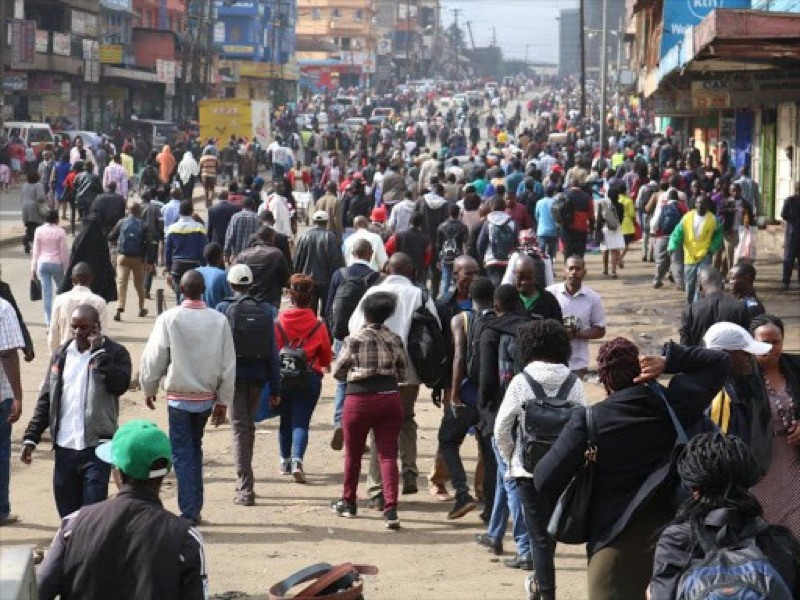
Image of Kenyan Citizens making their way in and out of Nairobi. Photo Courtesy of: The star
Nairobi is a blend of millions of Kenyans who come from different walks of life, different regions of the country and a crucible of more than 42 tribes. This fusion is a true reflection of the melting pot that is the Kenyan culture, and Nairobi is its colorful display.
As you walk down the streets of Nairobi, one aspect of culture that is clear for everyone to see is food. Early in the morning when we are all busy heading to work or catching up with our errands in the busy streets of Nairobi, we can easily spot a food vendor pushing their food trolley filled with food, or just parked at a certain spot. We can also find them busy chopping tomatoes and onions as accompaniments for the specific foods their selling. For those heading to work in the early hours, you mostly find boiled sweet potatoes, yams and arrow roots, and can easily have them as take away.
You will also not miss seeing boiled eggs and 'smokie' sausages being served with Kachumbari (salsa) and some ketchup or chili sauce to add to the taste. This combination always gets to me; the flavors burst and melt inside your mouth and trust me, you will definitely go in for another kill. The dishes allow you to experience cultures, and Nairobi’s street food mirrors how Kenyans embraced these cultures.
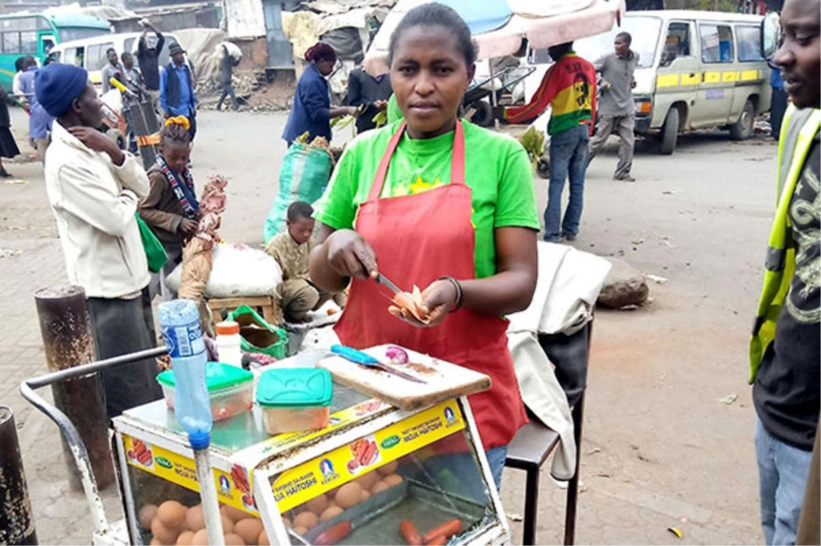
Street Vendor with her food trolley, preparing a smokie sausage for a customer.Photo courtesy of: Omoka Kenya
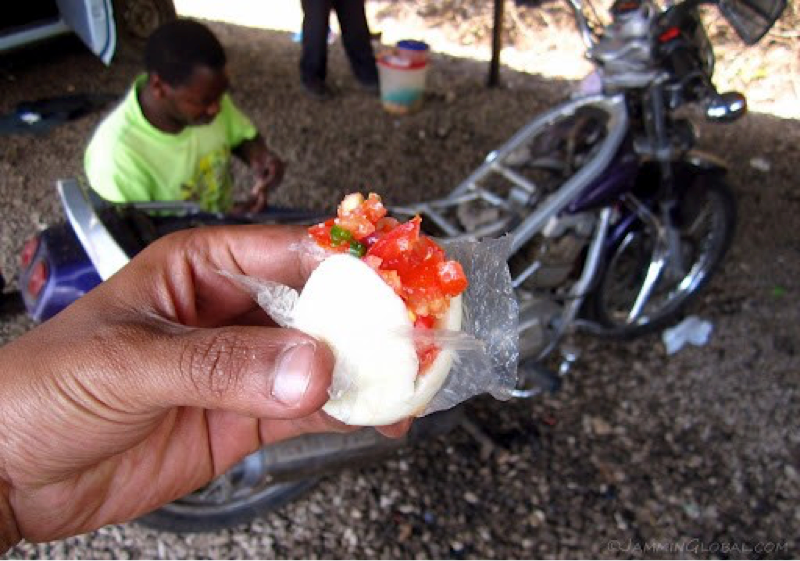
Image of a boiled egg being served with Kachumbari. Photo Courtesy of: Nairobi Transit Hotel
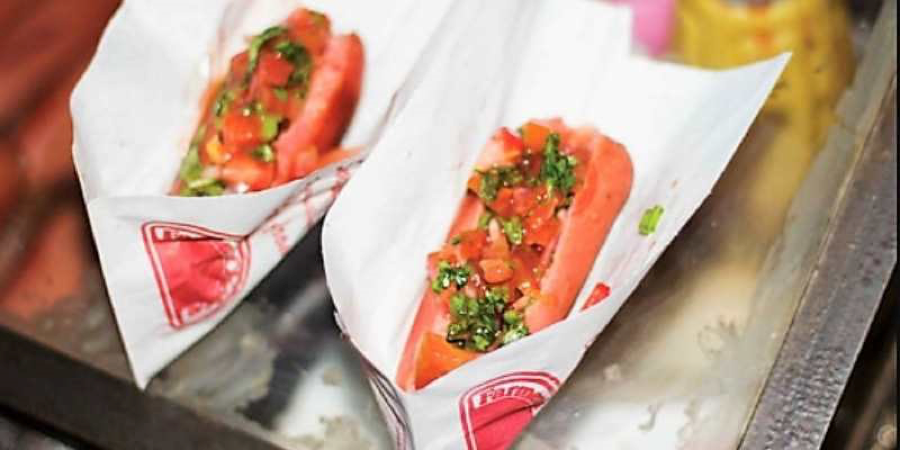
Image of smokie sausages served with Kachumbari. Photo courtesy of: Stavica
In this article, I'll take you through some of the more popular street foods in Nairobi embodying the cultural exchange taking place right in front of our eyes and in our very streets.
Mutura
The African blood sausage, more popularly referred to as mutura, is a very popular street food in Nairobi. This food comes from my tribe, the Kikuyu tribe. For us, Mutura, is a delicacy that is usually prepared during large occasions, where we slaughter goats and cows to prepare different meals for celebration.
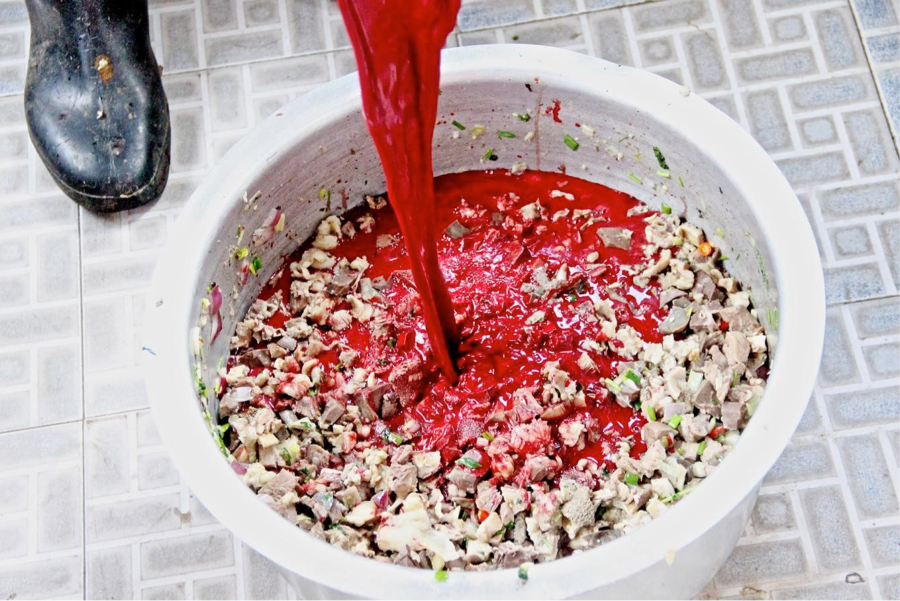
Mutura ingredients being soaked in blood. Photo courtesy of: Vice
After the animal is slaughtered, we usually grill the meat for some yummy nyama choma. The men then proceed to clean the intestines of the animal, and this will be the time whereby the mixture that makes up the mutura will be stashed. Once the intestines are properly cleaned, they stuff it with blood from the animal, along with pieces of fatty meat chunks and some vegetables for flavoring. After it is stuffed, the sausage is boiled and then put on the grill for a while before serving.
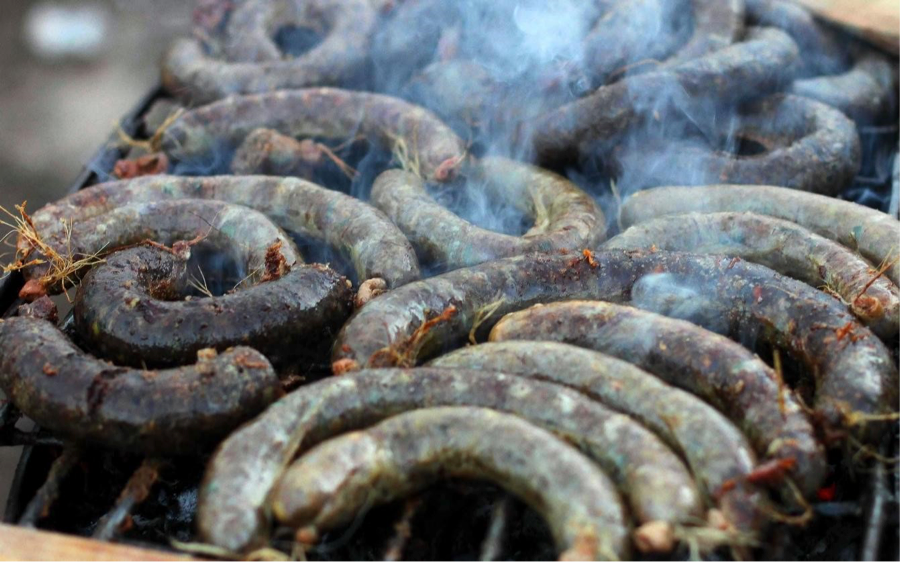
Photo of Mutura stuffed with all the ingredients and placed on the grill. Photo courtesy of: Kenya Geographic.
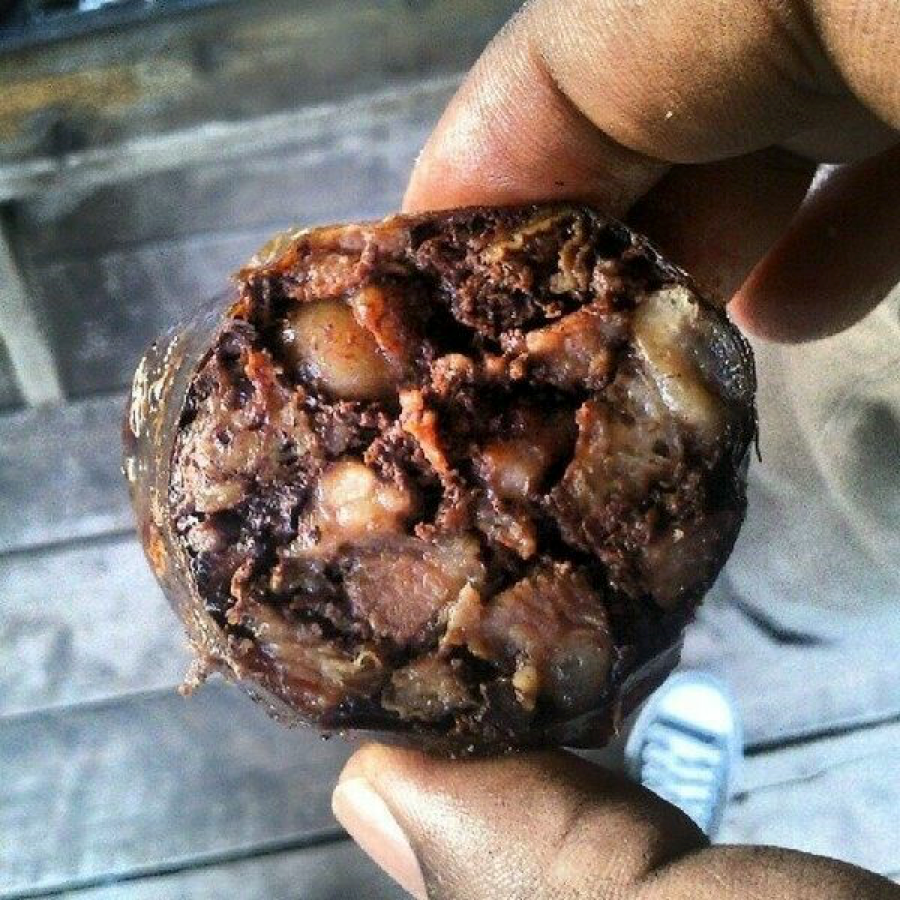
Image of stuffing inside the delicious street food, Mutura. Photo courtesy of: atlasobscura.com
However, most mutura on the streets of Nairobi is not made using blood. Most vendors have put their own twist on this delicacy by using a minced meat instead. The meal is usually roasted by the road side in the evenings, so as to attract weary Nairobians coming from work in search of a quick snack. The sausage is commonly paired with Kachumbari (a tomato and onion salad dish)
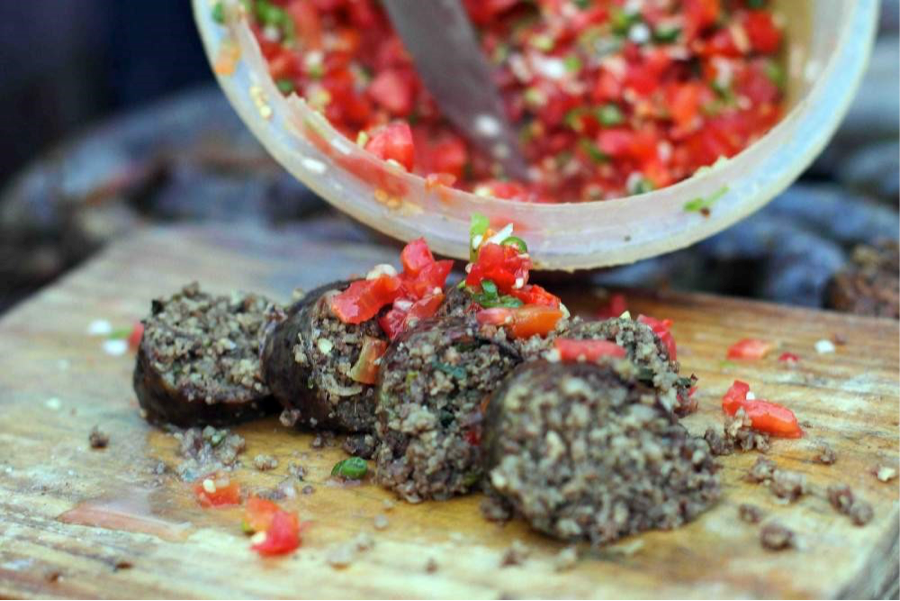
Mutura staffed with minced meat being served alongside Kachumbari. Photo courtesy of: Kenyan vibes, swaville style
The food is eaten in one standing, literally, as it is consumed right by the vendor's grill and can cost as low as Ksh 10. The price is determined by the size of mutura you want to eat. I personally find it more delicious whenever I eat a small amount in order to savor the taste.
Chapati
On the 22nd of July 2017, the Kenyan government announced that the Asian community would be officially recognized as the 44th tribe in Kenya. This gesture showed recognition of the community's contribution to Kenya from the dawn of the nation. From this community, Nairobians can be thankful for the yummy flat bread commonly known as Chapati.
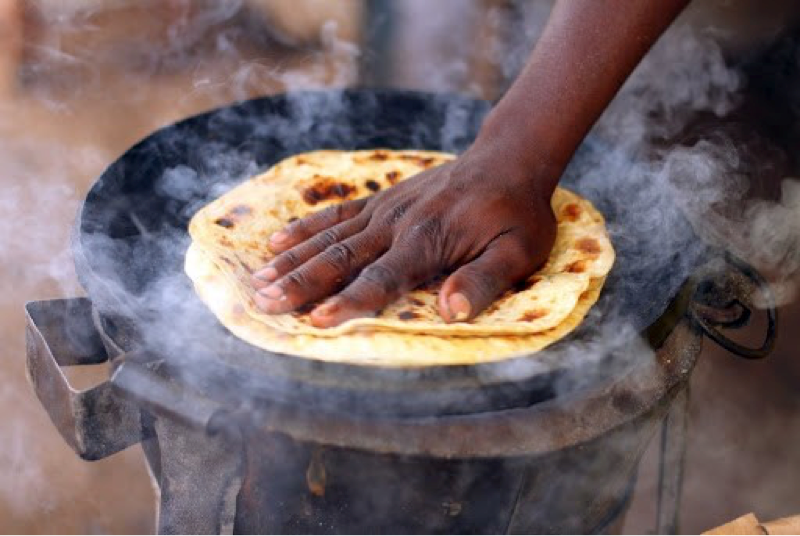
Image of Chapati being Friend on a grill. Photo courtesy of: Food of Africa
Chapatis originated from India and became popular in Kenya due to how delicious they are. Chapatis don't require a lot of ingredients to prepare; the ingredients include flour, oil, sugar, salt and water. The kneading, rolling and coiling of the dough is what makes it a hassle to prepare at home.
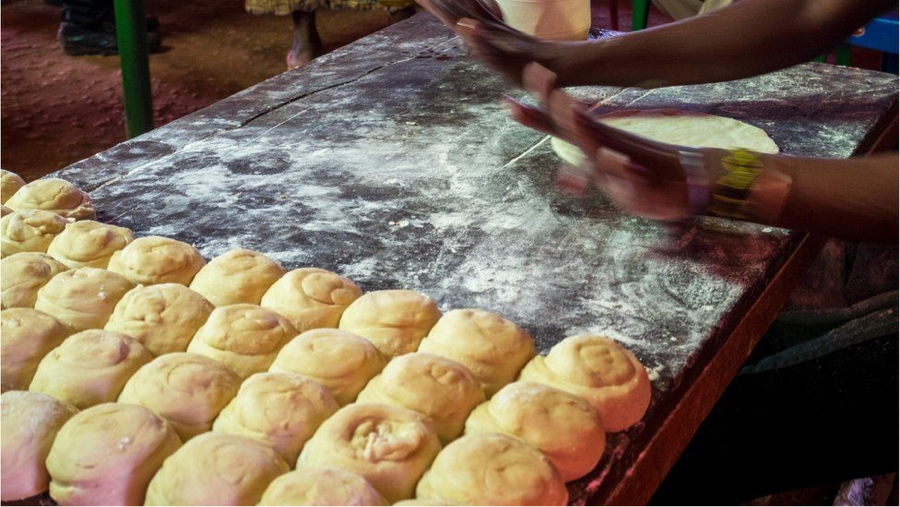
Image of Chapati dough being rolled in a circular pattern. Photo courtesy of: BBC
Nairobians can make their own Chapatis at home, but due to the time-consuming nature of the preparation most people in the city- especially the young working-class variety- choose to purchase them from the streets and take them home for a quick meal. The Chapati is usually paired with other dishes such as stews, vegetables and grains in order to make a more balanced meal.
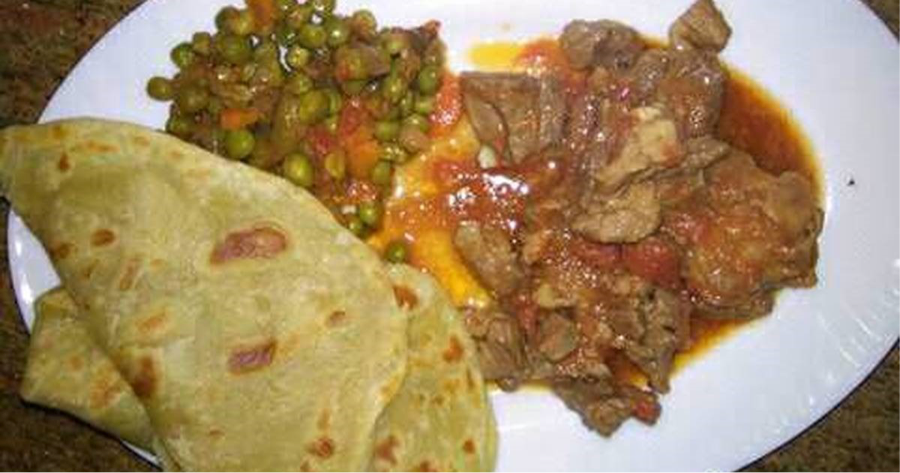
Chapati being served with meat stew and fried peas. Photo courtesy of: cookpad.com
Viazi Karai
From the Kenyan costal community, comes this absolutely scrumptious potato based meal. The name viazi karai comes from the Kiswahili language which roughly translates to potatoes prepared in a basin. Street vendors will boil the potatoes until well-done, after boiling they prepare a mixture of flour, salt, turmeric, cayenne pepper and mix them with a whisker inside a basin.

Viazi Karai Paste that is used to dip the potatoes in before frying them. Photo courtesy of Spice with Wangui
Once the mixture is ready and the potatoes are boiled you dip them in the basin with the mixture and proceed to deep frying the potatoes covered in the mixture. What emerges from the oil is quite frankly a near transcendent snack, and one of my favorite street foods in Nairobi.
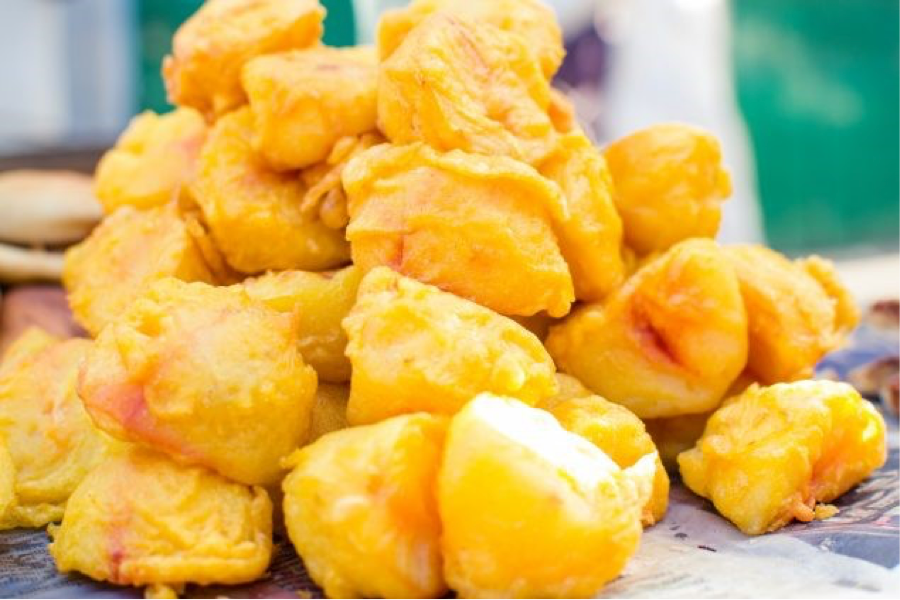
Image of Viazi Karai Being sold in the streets. Photo Courtesy of: Hapa Kenya
These potatoes are very popular in Mombasa. The meal is believed to have originated from coastal communities interacting with Arabs during the colonial period who traded with Swahili people. In Nairobi, viazi karai is becoming more available as people are embracing this food. It is usually served with ukwaju, tamarind juice, or kachumbari.
Other street foods common in Nairobi include; grilled maize, mishikaki and samosas. All these foods originate from various cultures within Kenya and offer a preview into the various cultures, helping people come together in celebration. You can find street foods across many streets in Nairobi at affordable prices. It's important to remember that these are foods prepared on the streets, and no one can quite tell how observant of hygienic practices the vendors are. So, it's up to you to be vigilant when picking a place to buy your street food from. Make sure it’s a clean place, but also enjoy whatever it is you choose to eat.
Out of all the street foods I have mentioned, the boiled egg and smokie sausages are my all-time favorite. The reason being that they are easy to find and one can actually make them at home with simple ingredients. The 44 tribes of Kenya have paved a way for all of us as a nation to experience and appreciate each and every culture through food. For example, I was able to learn how to make 'Viazi Karai' from my mother in-law and through this, I was able to expose myself to a coastal culture that I was not familiar with. As a country, we have the advantage of trying out various flavors of food from all traditions and making it a lifestyle.
“One cannot think well, love well, sleep well, if one has not dined well.”
― Virginia Woolf, A Room of One's Own
